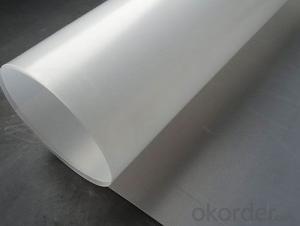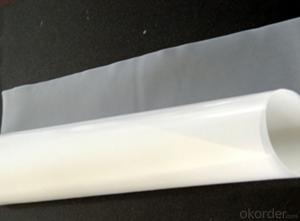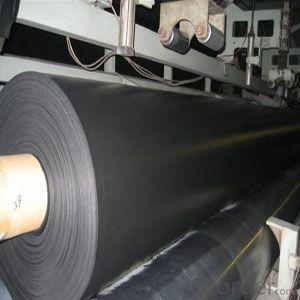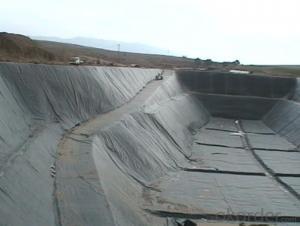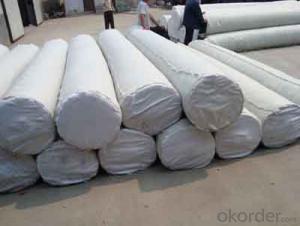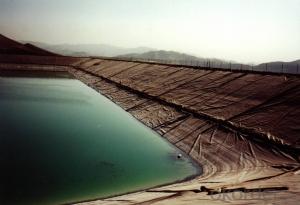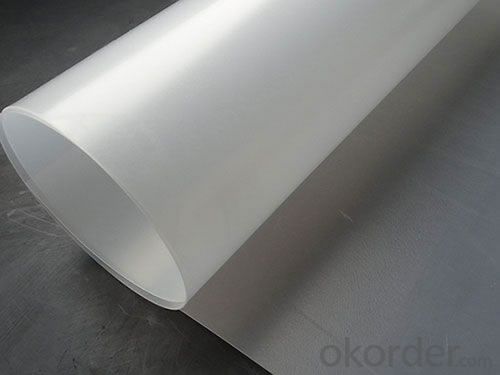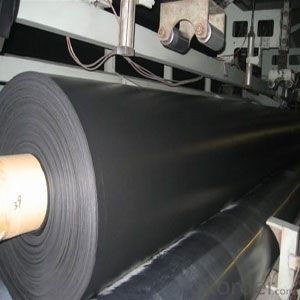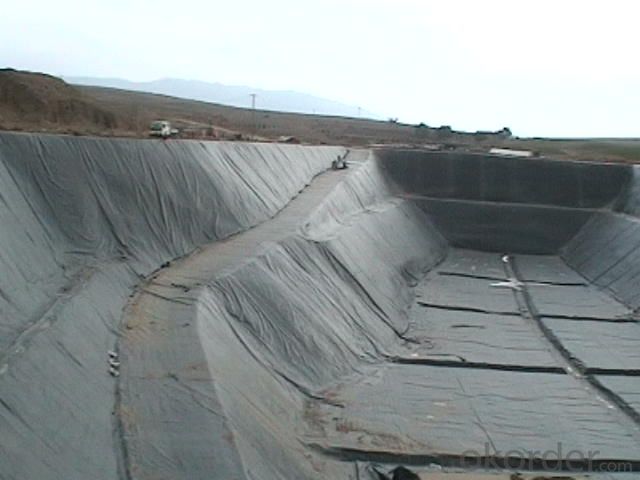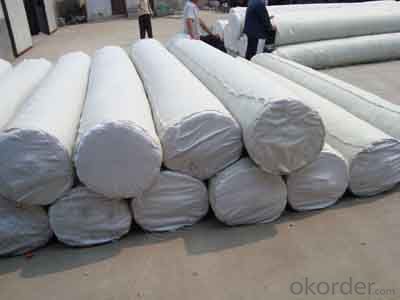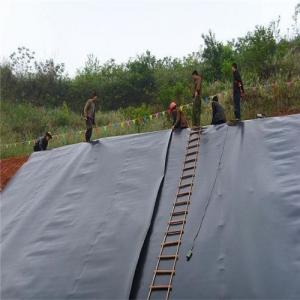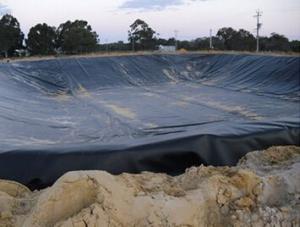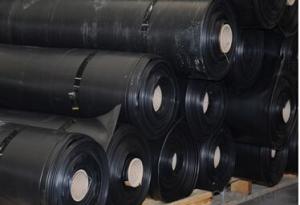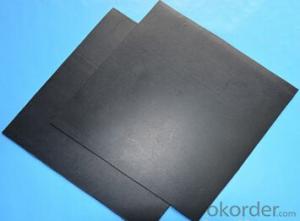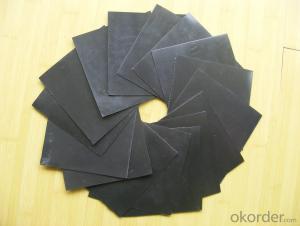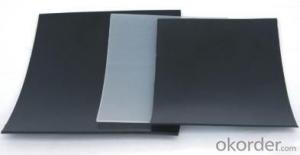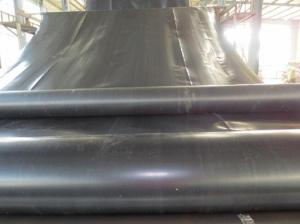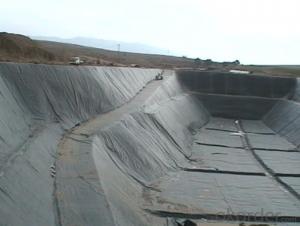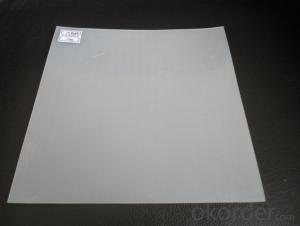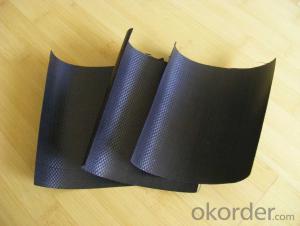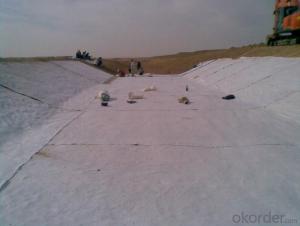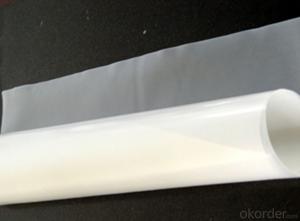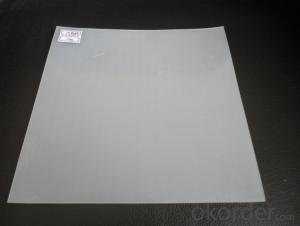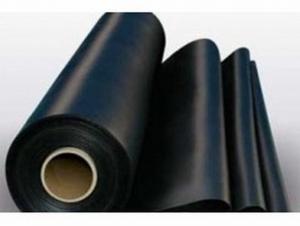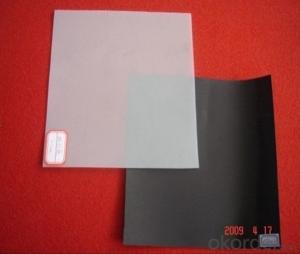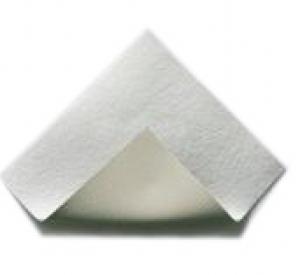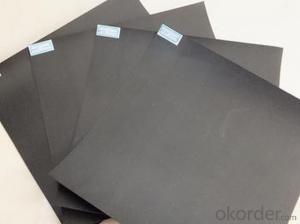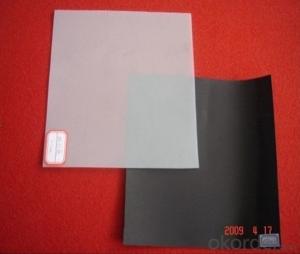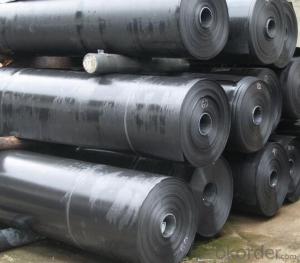Geomembrane Company One Side Textured HDPE Geomembrane for Landfill to Prevent Waste Water
- Loading Port:
- Qingdao
- Payment Terms:
- TT OR LC
- Min Order Qty:
- 10000 m²
- Supply Capability:
- 500000 m²/month
OKorder Service Pledge
OKorder Financial Service
You Might Also Like
Structure of One Side Textured Hdpe geomembrane
One Side Textured Hdpe geomembrane is based on the material of plastic film, relative to the HDPE geomembrane has better applied and suppleness, is to update the generation of soil seepage control material. LDPE geomembrane and geotextile glue them into a soil anti-seepage material it has corrosion resistance, good low temperature resistance, light quality, laceration resistant ability and other characteristics; The characteristics of its low cost, high quality and low price is not matched by other same category geotechnical seepage control material.
Main Features of One Side Textured Hdpe geomembrane:
1.Prevent leakage disposal in waste burying field or waste water or waste dregs disposing field.
2. River bank, lake dam, mine remaining reservoir, tunnel, liquid storage pool(pit, mine).
3. Preventing leakage in subway, basement, tunnel, hole. Anti-salt leakage in roadbed and other groundsill.
4. The plane direction laying of dam, the vertical direction laying for groundsill, used in the construction fence and waste material field.
5. Used in groundsill of road, highway, railway and waterproof layer of swelling clay and wet collapsed loess.
One Side Textured Hdpe geomembrane for Landfill Images
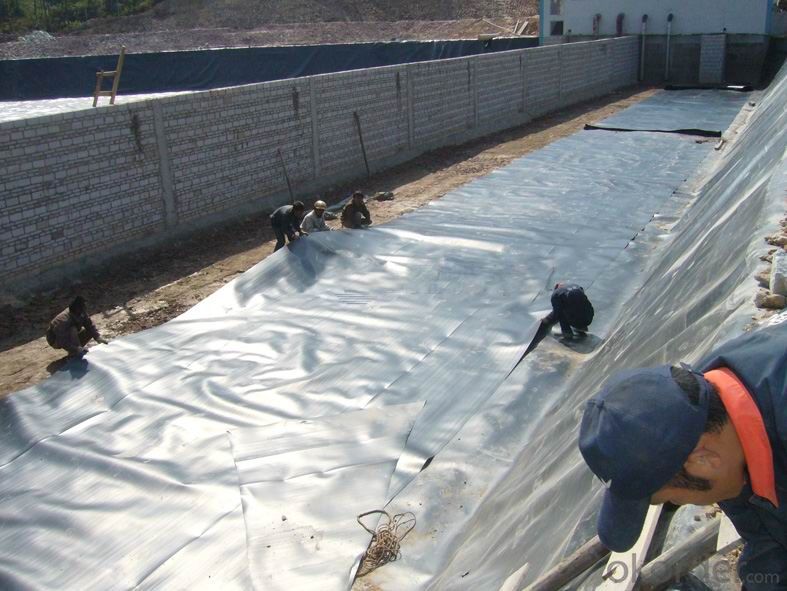
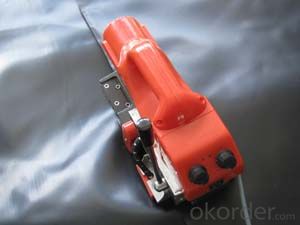
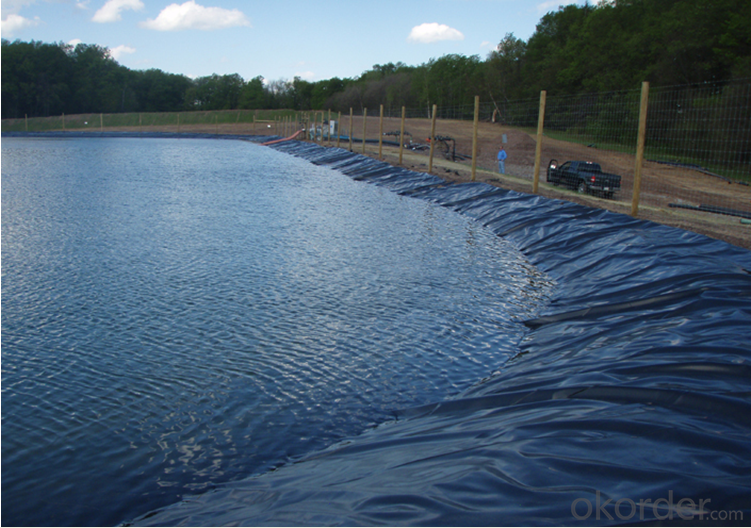
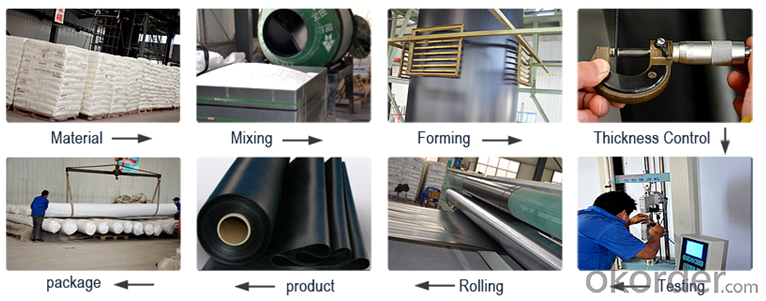
One Side Textured Hdpe geomembrane Specification :
More detailed products pls contact me.
HDPE geomembrane specifications(USA GRI-GM17 Standards)
No. | Item | Value | ||||||
0.75mm | 1.00mm | 1.25mm | 1.50mm | 2.00mm | 2.50mm | 3.00mm | ||
1 | Density (g/cm3) | 0.939 | ||||||
2 | Yield strength (N/mm) | 11 | 15 | 18 | 22 | 29 | 37 | 44 |
Break strength (N/mm) | 20 | 27 | 33 | 40 | 53 | 67 | 80 | |
Yield elongation/% | 12 | |||||||
Break elongation/% | ≥450 | |||||||
3 | Tear resistance/N | 93 | 125 | 156 | 187 | 249 | 311 | 374 |
4 | Puncture resistance/N | 240 | 320 | 400 | 480 | 640 | 800 | 960 |
5 | Stress crack resistance/h | ≥1500 | ||||||
6 | Carbon black content/% | 2.0-3.0 | ||||||
Carbon black dispersion | Carbon black dispersion(only near spherical agglomerates) for 10 different views 9 in categories 1 or 2 and 1 in category 3 | |||||||
7 | Oxidative induction time/min | Standard OIT≥100 High pressure OIT≥400 | ||||||
8 | Oven aging at 85°C | |||||||
Standard OIT-% retained after 90days | 55 | |||||||
High pressure OIT-% retained after 90days | 80 | |||||||
9 | UV Resistance
| |||||||
Standard OIT retained after 1600hrs | 50 | |||||||
High pressure OIT retained after 1600hrs | 50 | |||||||
10 | -70°C Low temperature impact brittle property | Pass | ||||||
11 | Permeability g•cm(cm2)•pa | ≤1.0× | ||||||
12 | Dimensional stability/% | ±2 | ||||||
FAQ:
1. How about the delivery time?
Two weeks upon receipt of down payment.
2. What kind of payments do we accepted?
T/T, L/C, WesternUnion, MoneyGram.
3. What's are the MOQ?
Normally the MOQ is 5000 SQM in theory.
And we can provide you free samples for quality inspection.
4. Do you charge for the samples?
Accordeing to our company policy, the samples are freee, we only charge the freight fee. And we will return the freight fee in your second order.
5. Can you produce the product according to customers' requirements?
Sure, we are professional manufacturer, OEM and ODM are both welcome
- Q: Are geomembranes resistant to corrosion?
- Yes, geomembranes are generally resistant to corrosion. They are designed to withstand exposure to aggressive chemicals, moisture, and other environmental factors, making them an effective barrier against corrosion.
- Q: How are geomembranes used in environmental applications?
- Geomembranes are used in environmental applications for various purposes such as landfill liners, containment of hazardous waste, and liquid containment systems. These impermeable synthetic membranes act as barriers to prevent the leakage of pollutants into the environment, ensuring the protection of soil, groundwater, and nearby ecosystems. They are also used in mining operations, agricultural applications, and water storage facilities, playing a crucial role in maintaining environmental sustainability.
- Q: Are geomembranes resistant to biogas migration?
- Yes, geomembranes are typically resistant to biogas migration. They are designed to provide a barrier against the migration of gases, including biogas, thereby preventing any potential leakage or contamination.
- Q: What is geotextile
- Geotextile is a new kind of building material, the raw material is synthetic fiber with high-molecular polymer, such as dacron, acrylic and chinlon. According to the manufacturing method, it is divided into: There are two types of woven geotextile and non-woven geotextile.
- Q: How do geomembranes handle temperature variations?
- Geomembranes are designed to handle temperature variations by being flexible and resistant to thermal expansion and contraction. They can withstand both extreme hot and cold temperatures without becoming brittle or losing their structural integrity. Additionally, geomembranes have excellent thermal insulation properties, which help regulate temperature changes and minimize heat transfer through the material.
- Q: What if there is water during construction of geomembrane?
- The main role of geomembrane on the road is water insulation, the part higher than the underground water level is isolated by geomembrane, and then backfill and grind, preventing the water through soil capillarity from soaking roadbed filler.
- Q: What are the typical thicknesses of geomembranes?
- The typical thicknesses of geomembranes vary depending on the specific application, but they generally range from 0.5 to 2.5 millimeters.
- Q: What is the wall membrane?
- Wall membrane material is a special wall decoration material.
- Q: How do geomembranes help with water containment?
- Geomembranes help with water containment by providing a barrier that prevents the seepage or leakage of water. They are made of impermeable materials, such as synthetic polymers, which effectively block the movement of water. This helps to prevent the loss of water from reservoirs, ponds, or other containment structures, as well as to prevent the infiltration of water into areas where it is not desired, such as landfills or contaminated sites. Additionally, geomembranes can also be used to line canals, ditches, and irrigation channels, ensuring that water is efficiently transported and contained.
- Q: Are geomembranes resistant to animal and plant attacks?
- Yes, geomembranes are generally resistant to animal and plant attacks. They are designed to act as barriers and are made from durable materials that are not easily damaged by animals or plants. However, in some cases, certain animals or plants may still be able to cause limited damage or degradation over time.
Send your message to us
Geomembrane Company One Side Textured HDPE Geomembrane for Landfill to Prevent Waste Water
- Loading Port:
- Qingdao
- Payment Terms:
- TT OR LC
- Min Order Qty:
- 10000 m²
- Supply Capability:
- 500000 m²/month
OKorder Service Pledge
OKorder Financial Service
Similar products
Hot products
Hot Searches
Related keywords
